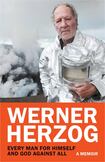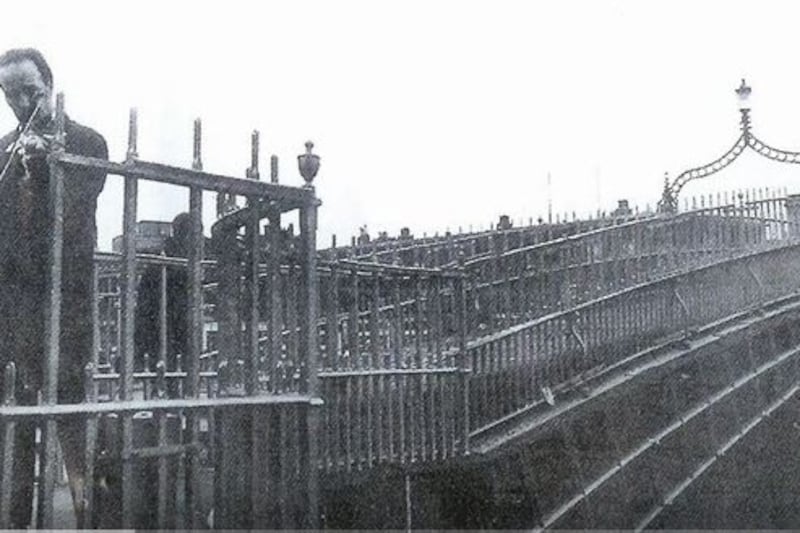
Werner Herzog has always seemed to be something more than human. Superhero? Supervillain? In the Tom Cruise movie Jack Reacher (2012), Herzog plays a crime lord called the Zek (Russian for “prisoner”), who chewed his own fingers off in a Siberian camp to prevent gangrene. He orders a troublesome underling to do the same. “Can I have a knife?” the underling asks, trembling. “Did I have a knife in Siberia?” the Zek replies, calmly.
The scene is meant to horrify but plays as comic. This is partly because Herzog’s rasping Bavarian voice tends to strike the anglophone ear as intrinsically funny, and partly because we know that chewing his own fingers off to survive in Siberia is the sort of thing that Werner Herzog might actually do.
Halfway through his racy, anti-introspective memoir, Every Man for Himself and God against All, Herzog recalls visiting a dying Bruce Chatwin, the English novelist. “He wanted me to end his torment,” writes Herzog. “Could I kill him? I said: ‘Do you want me to brain you with a cricket bat or asphyxiate you under a pillow?’” (Chatwin was “thinking more in terms of some fast-acting drug”.) There is a kind of sanity to Herzog’s answer; though it is not common-or-garden sanity. Herzog takes sanity to extremes.
In fact, he takes everything to extremes. Herzog is the visual poet of extremity. He has characterised his work as a search for “adequate images” but it is really a quest in search of the extreme. He will at a moment’s notice grab his backpack and trek halfway around the world to film people undergoing experiences at the edges of human tolerance; sometimes he will create those experiences for his performers or for himself.
Twice Herzog scorns introspection, calling it “navel-gazing”. At one point he tells us he has “a vexed relationship with mirrors” and that he tries not to look at himself
In Lessons of Darkness (1992), Herzog filmed firefighters capping burning Kuwaiti oil wells. In Grizzly Man (2005) he listens through earphones to a recording of the death of Timothy Treadwell and his girlfriend, mauled to death by bears in Alaska. Most famously, for Fitzcarraldo (1982), he used teams of Aguaruna tribespeople to haul a 320-tonne steamboat over a hill in the Peruvian jungle.
Herzog’s quarry, he says in his Minnesota Declaration (1999), is “ecstatic truth” – not the “accountant’s truth” of cinéma vérité but poetic truth, which “can be reached only through fabrication and imagination and stylization”. What happens when such an artist writes a memoir? We must, of course, be on our guard.
Though as things turn out, it hardly matters. The truths disclosed by Every Man for Himself and God against All are not exactly ecstatic; they are perhaps not even intended. Twice Herzog scorns introspection, calling it “navel-gazing”. At one point he tells us he has “a vexed relationship with mirrors” and that he tries not to look at himself. Indeed, you think, turning the final page: Herzog has spent a lifetime not looking at himself. Instead he has looked at the world. What was he trying to see?
If you want to know something useful about someone, ask about their childhood. Herzog was born in Munich in 1942. Almost immediately, his parents fled Allied bombing raids and moved to a remote Bavarian hamlet. When Herzog was 12 the family moved back to Munich – or to what was left of it. He told Paul Cronin, his interviewer for the book Herzog on Herzog (2002), that his childhood amid the rubble was great fun: “Everyone I know who spent their early years in the ruins of postwar Germany raves about that time.”
[ The Twilight World by Werner Herzog: Hiroo Onoda’s war without endOpens in new window ]
Perhaps. But the need to understand the Germany of his earliest childhood is what has driven Herzog to extremes throughout his life. His memoir is a catalogue of risks: he almost dies of amoebic dysentery; he breaks his leg in a ski jump; “we somehow made it across to Honduras to the guerrilla training camp”; he almost freezes to death on a mountain ...
Herzog’s life and films dwell in the haunted house of the Third Reich, Germany’s age of extremes. You can’t say, as you might of another filmmaker, that extremity is Herzog’s “theme”. It isn’t his theme. It’s his method. Herzog’s films pursue extremity, not to record it or to make patterns about it, but to climb inside it; not to aestheticise extremity but to know it from within. Only then will Herzog’s images be “adequate”: adequate, that is, to the barbarous history that is Herzog’s inheritance from the Nazis.
“[T]he concrete collapse of institutional order was something I needed to understand,” he says of an abortive film about the Congo. It’s an open question: can you understand something without introspecting about it? “My films come to me very much alive, like dreams without logical patterns or academic explanations,” Herzog has said. His filmography – vast but patchy – is prodigal with extraordinary, dreamlike images. What is missing is, precisely, “navel-gazing” – another term for navel-gazing being analytical thought. The memoir, too, shirks the duty of analysis. Images, anecdotes, fugitive brilliance, unquestionable bravery; surely, all these are enough?














